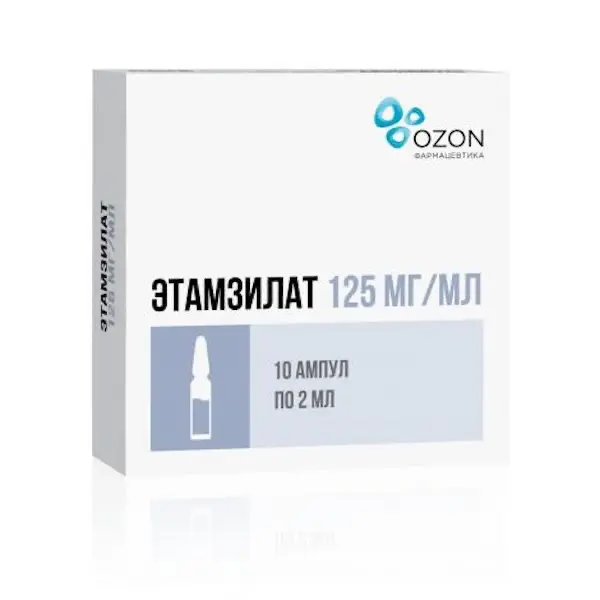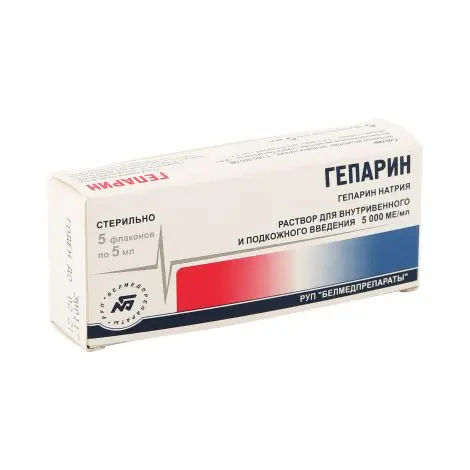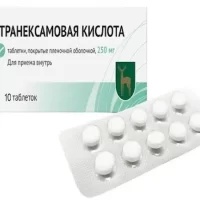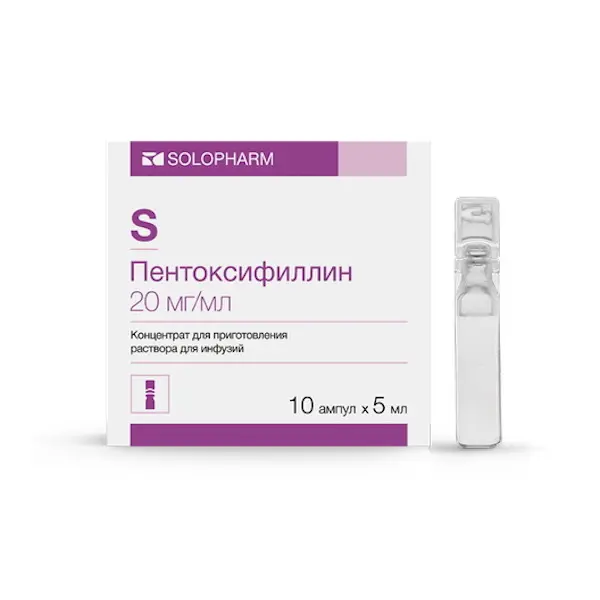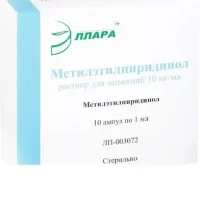Description
Etamsylate Pharmacodynamics
The drug increases formation of large molecular weight mucopolysaccharides in capillary walls and increases resistance of capillaries, normalizes their permeability in pathological processes, improves microcirculation; it has a hemostatic effect.
Hemostatic effect is caused by activation of thromboplastin formation in the area of small vessel damage.
The drug stimulates the formation of clotting factor III, and normalizes platelet adhesion.
The drug does not affect the level of fibrinogen and prothrombin time, has no hypercoagulative properties, and does not contribute to the formation of blood clots.
Indications
Prevention and treatment of capillary bleeding of various etiologies:
- During and after surgical interventions on all well vascularized tissues in dental, otorhinolaryngological, gynecological, urological, ophthalmological practice, obstetrics and plastic surgery;
- hematuria, metrorrhagia, primary menorrhagia, menorrhagia in women with intrauterine contraceptives, nosebleeds, bleeding gums;
- diabetic microangiopathy (hemorrhagic diabetic retinopathy, recurrent retinal hemorrhage, hemophthalmus);
- Intracranial hemorrhage in newborns and premature infants.
Contraindications
- Hypersensitivity to ethamsylate or to any of the drug components;
- Acute porphyria;
- Haemoblastosis in children (lymphoblastic and myeloblastic leukaemia);
- thromboembolism, thrombosis;
- Breast-feeding period
With caution:
Thrombosis, thromboembolism in history; susceptibility to arterial hypotension and unstable blood pressure; bleeding against overdose of anticoagulants; pregnancy; hepatic and renal function disorders (no experience in clinical use).
Pregnancy and lactation:
In animal studies, teratogenic effects of Etamsylate were not detected. In clinical trials fetotoxic effect of Etamsylate was not observed. Etamsylate penetrates through the placental barrier and is present in maternal and umbilical cord blood at insignificant concentrations. However, taking into account the insufficient clinical experience, the use of ethmzylate during pregnancy is possible only if the expected benefits to the mother exceed the potential risk to the fetus.
There are no data on penetration of Etamsylate into the breast milk. Breast-feeding should be discontinued if the drug is administered during lactation.
Dosage and administration method
- Intravenously, intramuscularly, subconjunctivally and retrobulbar.
- Etamsylate may be administered intravenously by drop in 5% glucose solution or isotonic sodium chloride solution.
- The optimal daily dose of Etamsilat for adults is 10-20 mg/kg of body weight per day divided into 3-4 doses as an intramuscular or slow intravenous injection.
- If Etamsylate is mixed with physiological solution, it should be used immediately
- Adults: in surgical interventions prophylactically administer intravenously or intramuscularly 250-500 mg 1 hour before surgery, during the operation intravenously administer 250-500 mg, this dose can be repeated if necessary. After the operation, every 6 hours 250-500 mg is administered until the risk of bleeding disappears.
- In children: the daily dose is 10-15 mg/kg of body weight divided into 3-4 doses.
- In neonatology: Etamsylate is administered intramuscularly or intravenously in a dosage of 12.5 mg per kg of body weight (0.1 ml = 12.5 mg). Treatment should be started within the first 2 hours after birth.
- In treatment of metromenorrhagia, the drug is administered in a single dose of 250 mg (2 ml of 12.5% solution) intravenously or intramuscularly every 6-8 hours for 5-10 days.
- In diabetic microangiopathy, the drug is administered intramuscularly for 10-14 days in a single dose of 250-500 mg three times a day or subconjunctivally/retrobulbarally in a dose of 125 mg.

